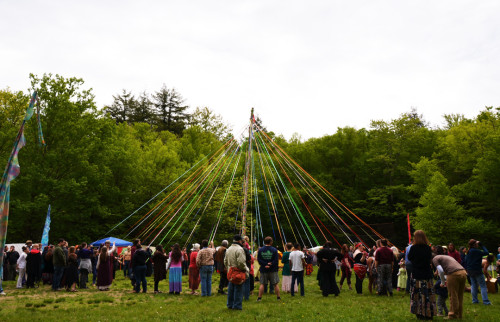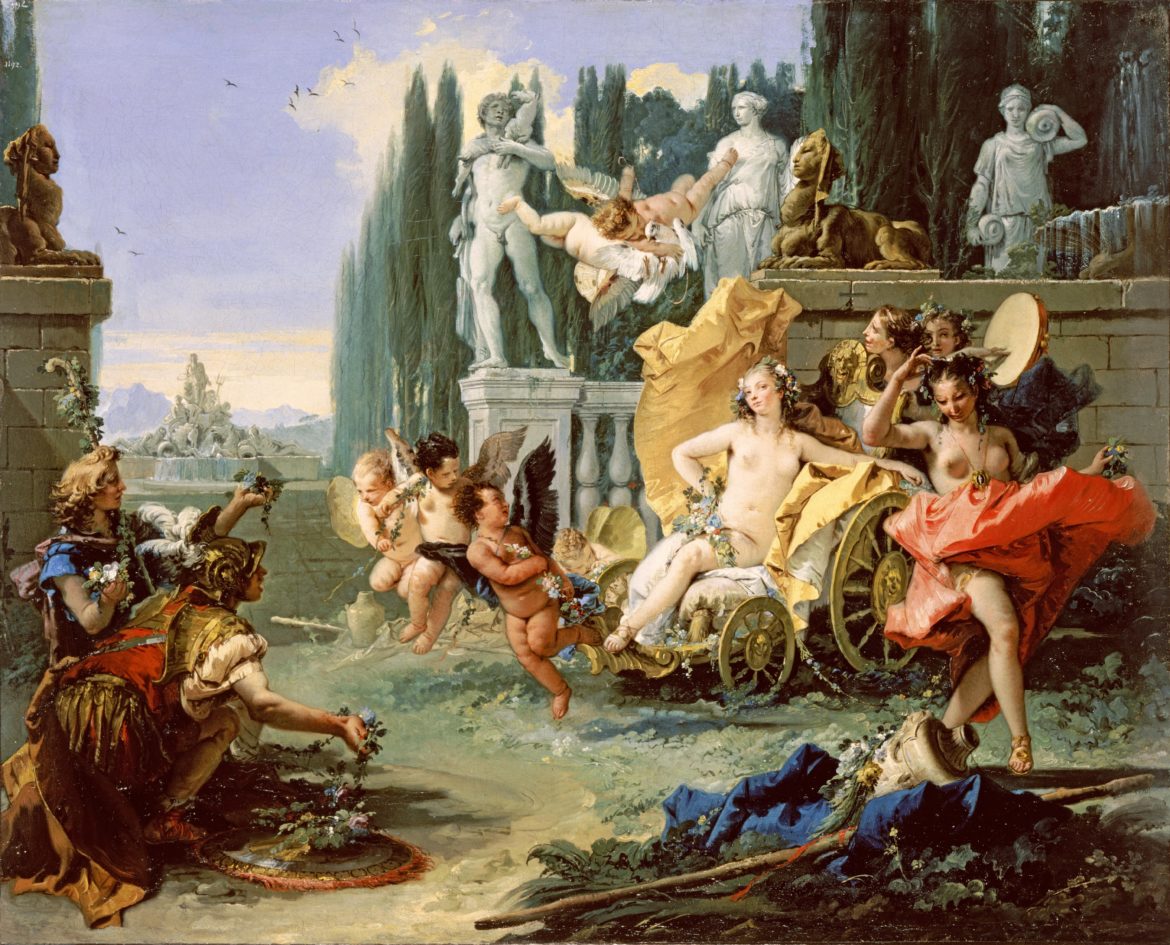TWH – Referenced in William Bell’s (1856) book, On the English nomenclature of the days of the week, John Jamieson’s Dictionary of the Scottish Language mentions a Gaelic rhyming proverb:
Woe to the mother of a magician’s son,
When the Beltaine happens on a Sunday.
Jamieson states he does not understand the verse; but, Bell explains, that the author of Britannia after the Romans declares it “a notion that cannot be easily explained but by supposing that the great slaughter of the Neo Druid Magi happened on that day.” That was one of the earliest printed references to Beltaine we could find.
It’s also hard to keep track of the spellings for the same holiday: Beltane, Beltaine, Beltain, Lá Bealtaine, Là Bealltainn, Boaltinn, Boaldyn, Beltain; Beltaine; Beltine; Beltany. But that’s part of what makes it an awesome turn of our Wheel.
For many Pagans, Heathens, and polytheists around the world, this week is one to celebrate. The days surrounding the first of May mark many traditional spring festivals and religious holidays recognized around the world. Of these the most well known is Beltane or Bealtaine, which, in some traditions, honors the union of goddess and god and marks the beginning of a Celtic summer.
In many secular and non-Pagan religious communities, the day is still celebrated as May Day, complete with the iconic Maypole. However, that is just one of the many holidays appearing at this time. Walpurgisnacht – the eve of Saint Walpurga’s feast – is also called Hexennacht, or Night of the Witches, and is celebrated the night of April 30. The eve of May Day was considered the night when witches would gather and meet. The saint was said to battle pests, rabies, and whooping cough, as well as witchcraft.

Dancing the maypole [EarthSpirit Community].
In ancient Greece, the holiday of Anthesteria was celebrated. Today it is more commonly called Protomagia. It is a day that recognizes the rebirth of nature and is associated with the well-known story of Persephone’s ascent from the underworld. While some modern Hellenic polytheists celebrate this day in February, many celebrate it on the first of May, and not long after, as spring continues its dance, some modern Pagans celebrate Thargelia, which is a birthday celebration for Apollon and Artemis.
“For May wol have no slogardie a-night. The seson priketh every gentil herte, And maketh him out of his slepe to sterte”
(For May will have no sluggards of the night. That season rouses every gentle heart)
~ Geoffrey Chaucer, “The Knight’s Tale”
In ancient Rome during the Republican era, Floralia was celebrated from about April 27 to about May 3 in honor of Flora, a goddess of flowers, vegetation, and fertility and one of the most ancient goddesses of the Roman Religion. Flora was one of the fifteen deities to have her priests supported by the Roman state and her altar was established in “antiquity” having been founded by the Sabine king, Titus Tatius.
Organized games were part of the festivities. The Roman poet Ovid writes that goats and hares – both considered symbols of fertility – were ceremonially released during Floralia while lupines and beans were thrown upon the observing crowd.

The Empire of Flora by Giovanni Battista Tiepolo 1743, oil on canvas
In the magazine Natural History, May 1993 (v.102), we found a rather gruesome discussion about Beltane:
“May Day was called Beltane by the ancient Celts. On this day, the sun rises midway between the place where it rises along the horizon on the spring equinox (due east), and its northernmost rising point on June 21, the summer solstice. The significance of May Day was not lost on the Celts. Beltane was a full-blooded pagan ritual day, when the protection of the gods during the newly begun growing season was invoked in a variety of ways. The earliest traditions were terrifically sinister. To appease three deities, three separate lethal punishments were given to a person choosing the Beltane cake, a burned piece of grain pancake, in a sacred ritual lottery. In 1984 near Manchester, England, a peat cutter discovered one such sacrificial victim: the well-preserved body of a man, who proved to have been murdered about A.D. 50. The victim had been axed so hard that the tops of his molars had been sheared off. A noose had then been twisted around his neck, crushing his windpipe. Finally, his jugular was lanced, and he was dumped in a bog. A burned piece of grain bread was found in his stomach. The British tabloids named him Pete Moss.”
But some thoughts on celebrating modern Beltane are far more pleasant. Beltane is a moment that many devote to capture the growing energy of the sun and the power and vibrancy of summer.

Phalaenopsis app. [Photo Credit: M. Tejeda-Moreno]
It is a time to celebrate the promise of abundance, the gifts of nature that include light and hope.
Winds of May, that dance on the sea,
Dancing a ring-around in glee
From furrow to furrow, while overhead
The foam flies up to be garlanded,
In silvery arches spanning the air,
Saw you my true love anywhere?
Welladay! Welladay!
For the winds of May!
Love is unhappy when love is away!”
~ James Joyce, 1926
The First of May is also International Worker’s Day or Labor Day in some countries. It is a public or bank holiday in many parts of the world. The day commemorates the international labor movement and the importance of labor rights and draws attention to the continuing challenges of many workers face including lengthy workdays, child labor, and job insecurity.
Our friends in the Southern Hemisphere are readying for winter. The first of May marks the height of autumn and the end of the last harvest season. The celebration of Samhain and other similar holidays that honor the dead or the ancestors are now upon them.
This year, whether Beltaine or Samhain is being celebrated, the holiday falls when much of the world is responding to the COVID-19 pandemic. So many will be celebrating virtually with their friends, fellow Pagans, and coveners.
To our colleagues in the southern hemisphere, may you have a blessed and meaningful Samhain.
To our colleagues in the northern hemisphere, may the fires of Beltane – however large, small, or virtual – bring many warm blessings.
However you are celebrating, may it be meaningful and powerful like our community.
The Wild Hunt is not responsible for links to external content.
To join a conversation on this post:
Visit our The Wild Hunt subreddit! Point your favorite browser to https://www.reddit.com/r/The_Wild_Hunt_News/, then click “JOIN”. Make sure to click the bell, too, to be notified of new articles posted to our subreddit.
